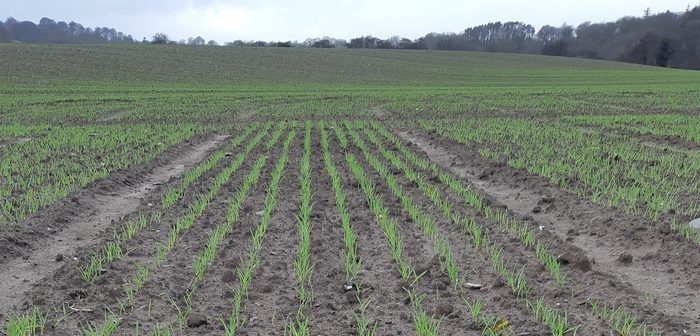Kinto® Plus, a new generation seed treatment from BASF for use on all winter cereals will be available this autumn, providing comprehensive and long-lasting efficacy against a wide spectrum of seed and soil borne diseases, and conferring growth promoting effects to the crop.
Sarah Middleton, BASF market manager seed, said, “Kinto® Plus is a premium seed treatment which assures rapid germination and improves establishment, whether applied to farm saved seed, hybrid, conventional, or seed production crops, helping to secure higher yields from the outset.
The name Kinto may be familiar to some, from a previous seed treatment, “Kinto,” which is no longer available to market since the revocation of prochloraz, however, Kinto® Plus is a different, new generation product.”
Kinto® Plus has a unique and complementary combination of active ingredients; 33.3 g/l triticonazole, 33.3 g/l fluxapyroxad, (Xemium®) and 33.3 g/l fludioxonil.
These active ingredients give Kinto® Plus a very broad label with activity against the following diseases: seedling blight and foot rot, Common bunt, (seed and soil-borne) loose smut, covered smut, leaf stripe, snow rot (grey or speckled snow mould) and stripe smut, all from a single application at a low dose rate of 1.5 l/tonne of seed.
Mrs Middleton “The control of leaf stripe and loose smut, which can be seen as forgotten diseases, are key attributes of Kinto® Plus, particularly for seed production crops, where there are tolerances for infection levels of these diseases,” added Mrs Middleton.
The active Xemium® also brings physiological benefits, which are on the label, leading to better plant vitality and root growth, enabling the plant to better withstand stress.
Mrs Middleton said, “Kinto® Plus improves germination and enhances root development, both in terms of mass and length, particularly during times of stress, this results in quicker crop establishment, better tiller retention and more vigorous plants, enabling growers to maximise the genetic yield potential of the crop.”
BASF and independent trials have shown that no matter what the winter cereal crop, or the variety, Kinto® Plus performs consistently. Kinto® Plus is also approved for use for barley crops destined for brewing.
Risk for the grower is reduced when using Kinto® Plus treated seed as it allows extremes to be mitigated, giving built in resilience, allowing the seed to continue growing in sub- optimal conditions.
This makes Kinto® Plus a very useful addition to the toolbox, particularly for growers who practice delayed drilling as it will also perform whatever the drilling date.
Mrs Middleton said, “Stale seed bed techniques used to deal with arable weed pressures mean drilling dates are often moved back, resulting in shorter weather windows for establishment, at a time when ground conditions are often challenging. The same is true for crops where drilling is delayed to reduce the risk of Barley Yellow Dwarf Virus (BYDV). It is in these situations that Kinto® Plus can play a pivotal role in getting crops off to the best possible start with the physiological benefits it offers.”
Rob Gladwin, A, BASF said, “We are delighted that Kinto® Plus’ registration has come through, faster than we were anticipating. It has done so because we worked with CRD, which continues to operate under the same rules as they were in the EU, to understand exactly what was expected in terms of regulatory requirements. We employed our innovative, best-in-class thinking to ensure these were all addressed.”
The rapid approval of Kinto® Plus is, Mr Gladwin also believes evidence of the good regulatory profile of Kinto® Plus’ three balanced active ingredients and the CRD’s strong international reputation for taking a pragmatic, science-based approach to regulatory approvals.
Now Kinto® Plus is registered it is essential good stewardship is maintained in the field. Mr Gladwin said, “Growers should adhere to best practice particularly relating to ensuring seed is buried and any spillages are cleaned up or buried, to minimise the potential for birds or wildlife to forage for treated seed on the surface.”




